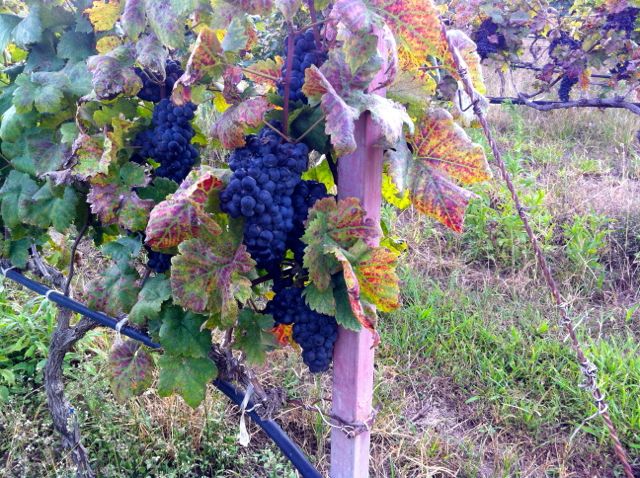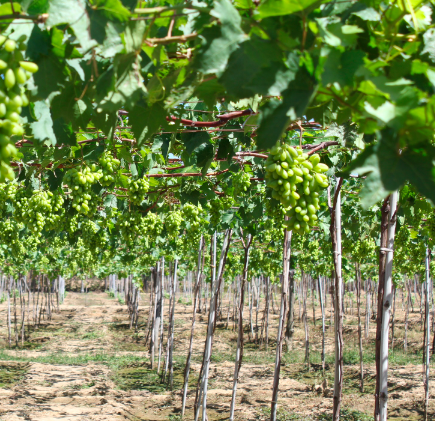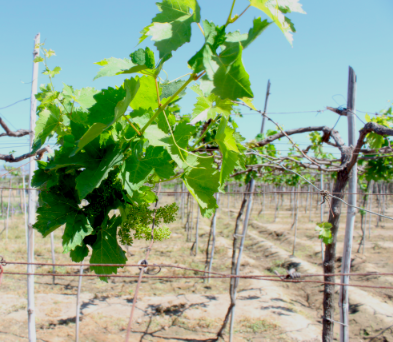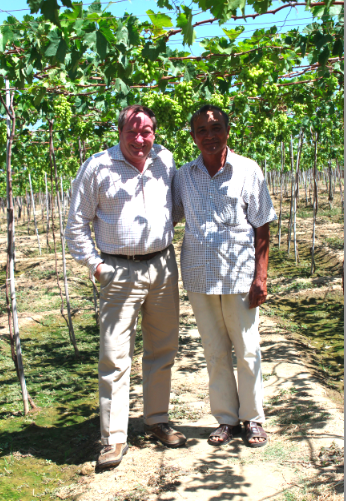|
Thailand
Our early tastings had left us questioning the assignment but our
travels throughout Thailand showed us that despite some spotty efforts
elsewhere - Thailand in particular is making great leaps in the quality
of its wine production. This comes in spite of Thai government
tax
laws that actually punish local producers and weigh them down with very
high taxes when their Australian competitors are actually getting lower
rates under the Thai-Australia Free Trade Agreement.
In Thailand we were fortunate to meet and to have considerable access
to Khun(Khun in Thai is equivalent to
Mister and is a polite address)
Visooth Lohitnavy, founder and former Head(president) of the Thai Wine
Association till last year and also CEO & Managing Director of
GranMonte Asoke Valley Winery. I had reached out to Khun
Visooth when our trip was first planned and he had invited us to his
Wineries Harvest Festival which we unfortunately missed. We met
up
with him in mid February, 2011, a few short days later. GranMonte
was started in 1999 and has 100 Rai or 40 acres in grapes.
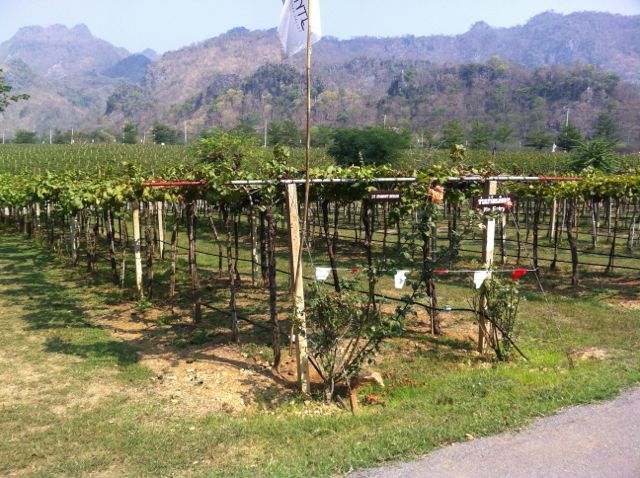 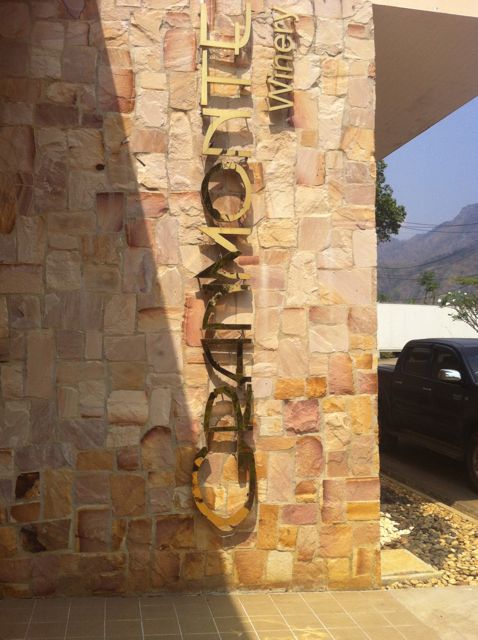
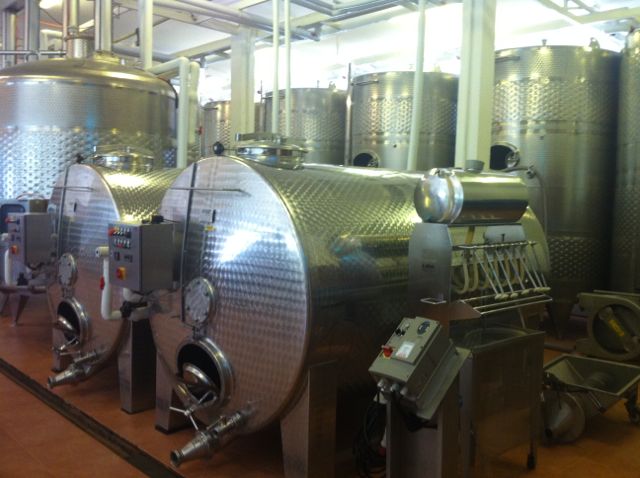 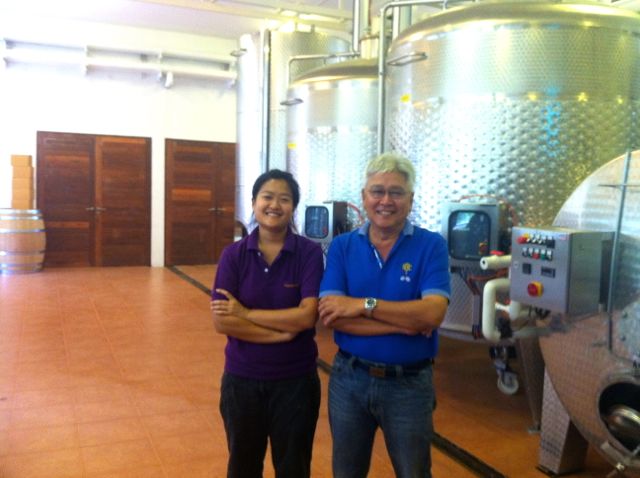
Pictures above
left: Grapes at GranMonte. Above Right: The exterior
of the wine making facility.
Bottom Left: The modern wine making facilities at GranMonte
and Nikki and Visooth Lohitnavy.
Khun
Visooth studied in Germany in the mid 1960s and after returning
to Thailand in the early 1970s started thinking of doing
something different in terms of Thai wine based on early influence by
Dr. Chaiyudth Karnasuta of Chateau De Loei, one of the earliest
pioneers in the Thai wine industry. Dr. Chaijudh Karnasuta who
was
then with Ital Thai - one of Thailand’s most successful construction
companies, discovered that the Phurua highlands of Northeastern
Thailand could produce good wine-making grapes. In 1995 Chateau de
Loei, the first commercially produced quality Thai wine, came to
market. Visooth was also influenced by the owner of Singha Beer
who
was just then planning to start a vineyard and winery in the Khao Yai
area.
Khun Visooth started out with Syrah, Chenin Blanc and Temprannillo and
later with Cabernet Sauvignon and Viognier grapes but later up-rooted
Tempranillo and replanted with Duriff (aka Petite Sirah) and
Grenache. Later they experimented and planted with other grape
varietals such as Verdelho and Semillon. Visooth impressed us
with
his knowledge of wine and his obvious passion for both the growing and
the wine making. Later we met his daughter Nikki who is
Thailand’s
first and only female winemaker. Nikki who was educated in
Australia
brings her father’s passion to her work. The winery produces
about
70--80,000 bottles a year of wine. Their winery produces 60% red,
30%
white and 10% rose. All winery material was imported and looked
state-of-the-art. Oak barrels are used new every year and come
from
France.
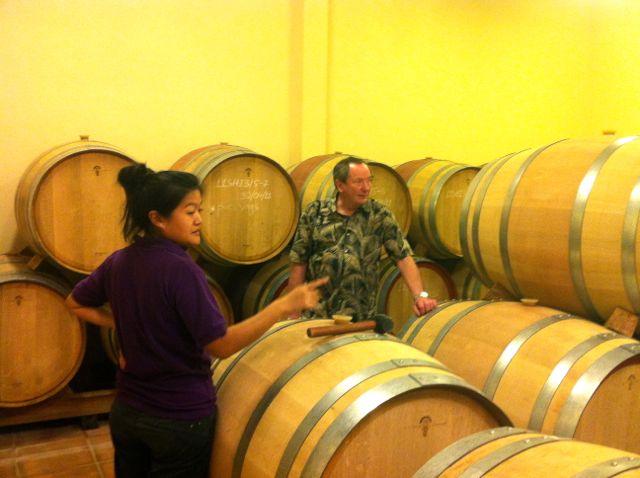 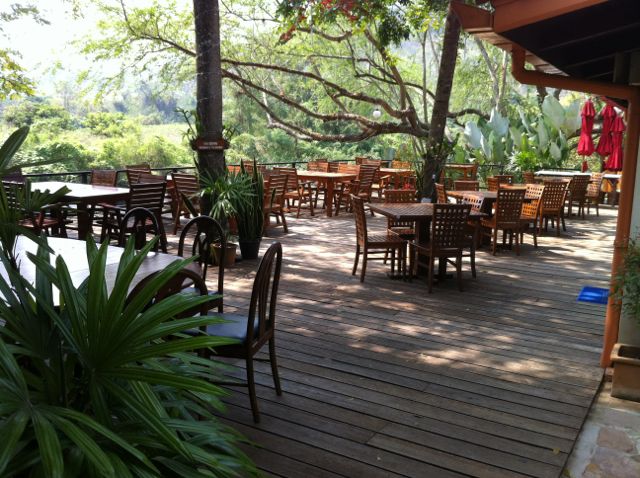
Pictures above
Left: Nikki Lohitnavy, wine maker at GranMonte and
George.
Right: The outdoor restaurant area at GranMonte
Wine from GranMonte is exported to Japan, Hong Kong,
Germany and the Maldives and currently less than 20 percent of
production goes for export. Most sales are at the winery but
GranMonte also has a sales agreement through Central, the
largest Thai shopping and Consumer Sales company, for sales in
Bangkok. The winery also has a guest house, a high quality bistro
or
restaurant and a nicely laid-out sales area.
Over a tasty lunch we tried many of GranMonte's wines. I
was most impressed by the rose but also found both the whites and the
final red we tasted to be fully the equivalent to any Australian,
French or US wine I had tasted. Many of these have won awards and both
GranMonte and the following vineyard often compete in wine competitions.
Visooth talked about the establishment of the Thai Wine Association
which he helped to found in 2004. This was established to build
the
name of the Thai Wine Industry and the Association has annual wine
inspections and a central lab in Bangkok. Visooth headed the
association until last year but has now stepped down in favor of
younger wine growers. Visooth said that one of the biggest
dis-incentives to a flourishing wine industry was the Thai tax on
wines. Wines are taxed at 260% and local wines are fully as
expensive
as most foreign wines. Various groups have tried to change this
law to
recognize the benefits vineyards bring in hiring local labor, creating
economic activity, etc. but to-date these efforts have not been
successful in changing the tax.
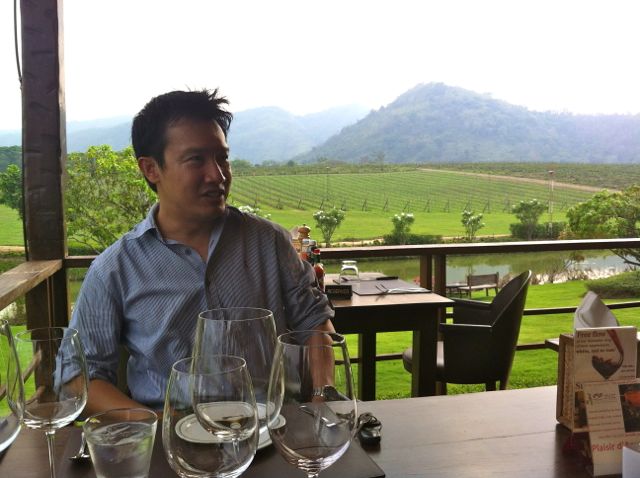 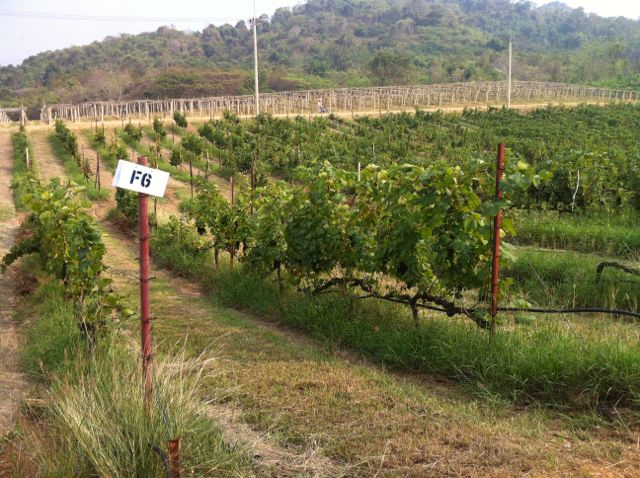
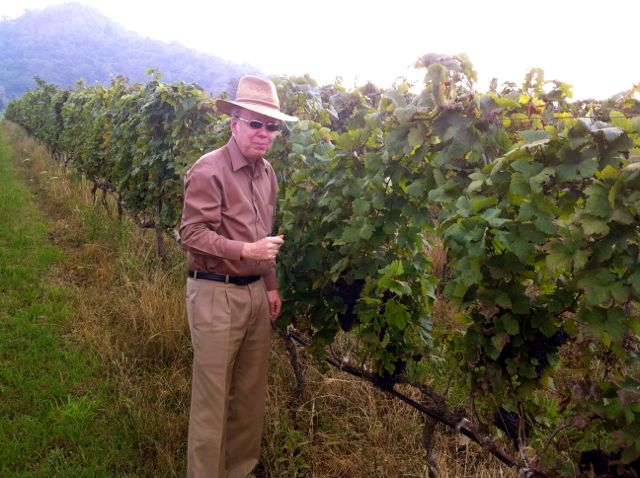 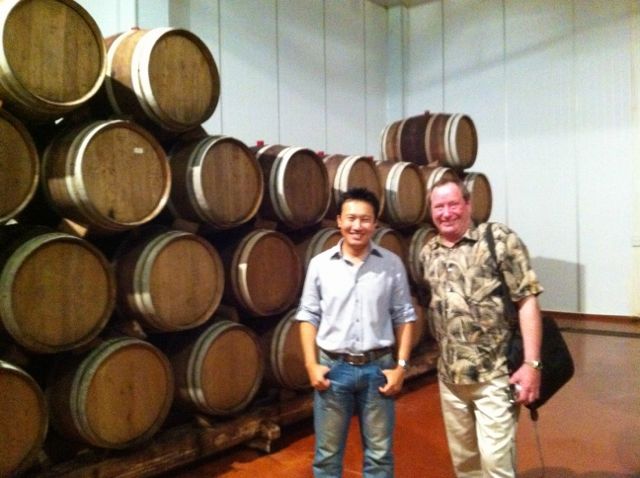
Pictures above:
Khun Prayut Piangbunta, Managing Director and Chief
Wine Maker of PB Valley Khao
Yai Winery and some of their grapes. Below left: The author
sampling Syrah grapes and Khun Prayut and George Bursick in PB Valley
Khao Yai Winery's well set out and modern wine making facilities.
We then proceeded on to PB Valley Winery which is on the same road as
GranMontes and other winery operations. PB was one of the first
vineyards in Khao Yai or in Thailand as it started growing grapes in
1992-93. It is owned by the Singha Beer group, one of Thailand’s
longest and still best known beer company. At PB Winery, we met
Khun
Prayut Piangbunta, Managing Director and Chief Wine Maker.
PB Winery began in 1989 on a large piece of land with the total area of
320 hectares surrounded by mountain range and preferred macroclimate
for viticulture. It was also a birth place for Khao Yai wine
producer
region. The owner, Dr.Piya Bhirombhakdi who once was the president of
Boonrawd Brewery Co.,Ltd. (Singha Beer) and a visionary entrepreneur
with a great appreciation for the finest things in life set about his
mission to produce wine with a world-class taste under his initial “PB”
label for the people of Thailand.
Prayut said that at first they had great difficulty in selecting
suitable grapevine varieties for Thailand’s soil and tropical weather.
At the beginning PB experimented growing over 50 grapevine varieties
originated from several countries like Germany, Italy, France, Spain
and Australia and after 2 years trial, we did come out with a good
results, Shiraz (Syrah), Tempranillo, Chenin Blanc and Colombard were
doing well in their new home with reasonable amount of yield per
hectare. Propagation of these varieties has been carried out ever since
with initial planting area of 20 hectares including table grape
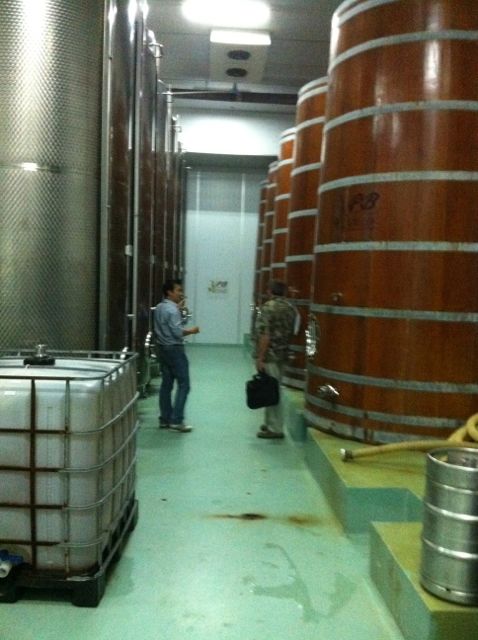
Picture above:Khun
Prayut and George Bursick at PB Valley Khao Yai Winery
|
At first the winery had two locations,
one in the North at Chiangrai
and the other in Khao Yai. The location in Chiangrai ultimately
proved
to have liabilities because of fogs in the early morning and problems
with downy mildrew and other diseases and was subsequently dropped.
In 1995, the winery started construction and took two years to
build.
In Feb, 1998, the winery produced its first vintage. In that year
Prayuth was studying brewing and wine making in Germany. In 1995,
the
owner of Singha beer told Prayuth that they needed him back in Thailand
and he returned after studying wine making in addition to his earlier
studies in beer making.
Over the initial years, wine production
grew and reached a peak in 2004
when 400 tons of grapes were harvested. Since that time, grape
production has fallen as the winery had focussed more on quality and
less on quantity.
Currently PB Winery produces 150,000 bottles of wine from 150-180 tons
of grapes. Over the years, Prayut was very honest that PB has learned
from its mistakes and has passed along these lessons to other Thai wine
makers who have vastly profited from the errors. For example
originally they experienced infection from trimming of the grapes as
they didn’t paint the cuts.
|
Prayut took us on a tour of the winery and vineyard which is much
larger but just as state of the art and well set out as any we had seen
in the U.S. The Winery was planned for one million bottles at
full
capacity but has never reached 50% of this. Prayut said that
production costs for grapes in Thailand are high compared to Australia
and other countries and will rise further when the new minimum wage law
is enacted. This will push Thai owners to go even more into
mechanization. Currently, the vineyard was harvesting and a crew
of 40
was working. PB like Grandmonte down the road has an annual
rainfall
of 1,500-1,800 mm of rainfall a year with most of this falling in the
rainy season. There is one harvest a year which occurs in
Feb-March
and normally plants go through a serious pruning in September.
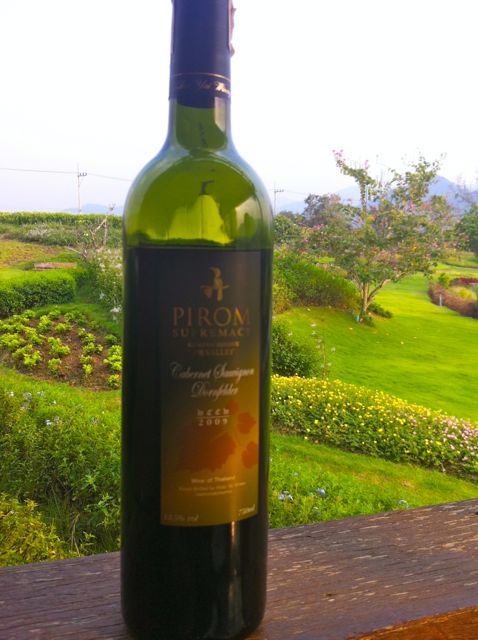
Picture above:Pirom
Kho Yai Reserve Wine: the Winery's premium vintage.
|
Prayut noted that their is a 60% Alcohol Tax and a 10% Municipal
tax
which all together ends up in a tax of about 68%. Most liquor and
wine
makers have a separate company to distribute their wine or liquor as
the taxes make most wine producers and distilleries low profit margin
companies.
Sixty-five percent of PB’s production is red with Syrah, Tempranillo
being major varietals. Thirty percent is white wine with Chenin
Blanc
and Columbard being biggest produces and about 5% is Rose. Eighty
percent of their wine is consumed domestically with major exports to
Japan.
Later we tasted the wines made by
Prayut at “The Great Hornbill Grill”. Prayut who had impressed
both George and I with his obvious
passion and knowledge of wine making told us that PB goal was to make
wine for Thai people to international standards. He said that in
Thailand most people who consume liquor start with beer, move on to
whiskey in mid-age and then to red wine as they aged.
|
Because
most of
the drinker had first gained a taste for whiskey, most of them tended
to find white wine too light and red wine was most popular. In
our
tasting, we started with white wine under their Sawasdee label and then
went to their middle level PB Reserve label and finally to their
top-end Pirom Khao Yai Reserve range. George and I were very
impressed
with the range and the taste of wines and the beautiful nature of the
Great Hornbill Lodge that looked out over the surrounding grapes and
was both scenic and a peaceful setting to enjoy the luscious wines.
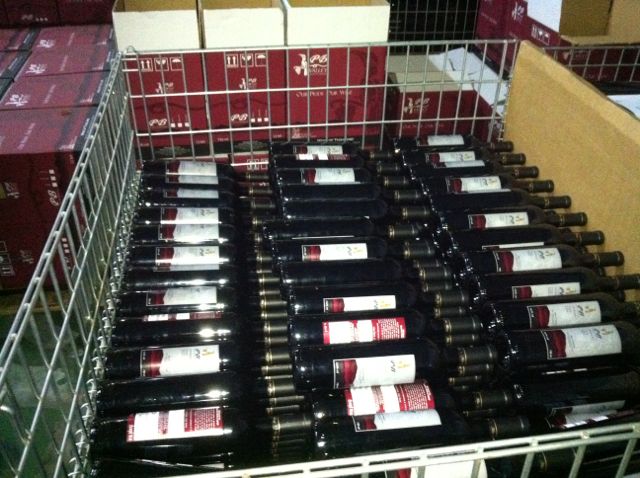 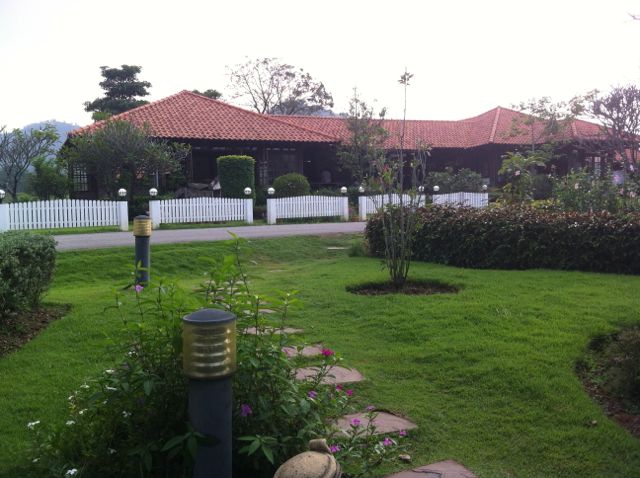
Pictures
above:Recently bottled vintage and the outer view of the Great Hornbill
Grill Restaurant
at PB Valley Khao Yai Winery.
Later
we tried some of the wines of Siam Winery which is the largest
Winery by production in Thailand and produces, Spy, a wine drink,
bulk wine plus a number of other lines. Siam Winery owns the 300
Baht
(US Dols 10) wine category which is the low end of wines in
Thailand.
Their Wineries in Samut Sakorn and near Hua Hin further South of
Bangkok are among the countries largest. PB Winery is the second
largest wine producer in Thailand by volume and is followed by
Grandmonte and Village Farm. Chateau de Loei in the Northeast of
Thailand still produces but is now mostly known for their Chenin Blanc.
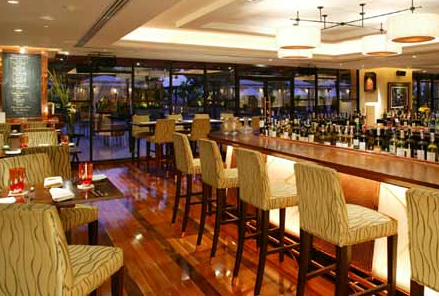 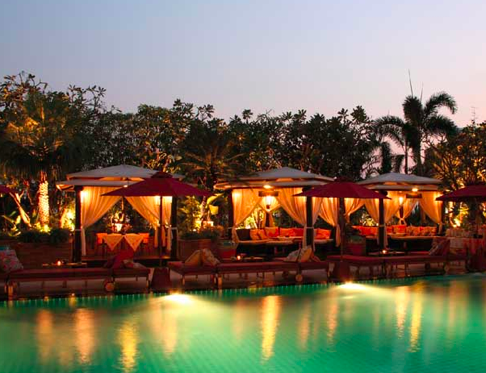
Pictures above:
Aldo's Mediterannean Bistro and Wine Bar
That evening we saw the top end of the wine tasting segment in Thailand
at the Aldo’s Mediterranean Bistro and Wine Bar where two U.S. wine
afficionados are trying to increase opportunities for good quality U.S.
wines. This top quality restaurant and wine bar in the Aston
Hotel on
Sathorn is a pick for the nearby banking and financial crowd.
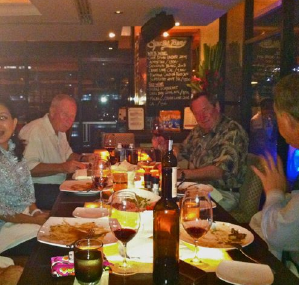 |
With the
owners, Ken Stevens and George Foose, we tasted a bottle of Syrah under
the PB Valley Pirom Khao Yai Reserve brand which we had opened at the
PB Winery, they both agreed the wine was well done and a demonstration
of the Thai wine industry’s growing stature. We then tasted and
discussed a series of wine’s from the U.S. We were impressed that
even
though high taxes deter growth of the wine sector in Thailand that many
in Bangkok appreciate and savor wines and really are trying to do
everything possible to bring good wines to those who care. As we
discussed our observations on wines in Southeast Asia, I couldn’t help
but feeling that we will be seeing more of South East Asian wines and
that quality standards will soon be similar throughout the region to
what is now seen in the best Thai wineries and those of their
companions in Australia, France and the U.S. |
Both George and I were encouraged as to the advancement of the Vietnam
and Thai wine industries, but we felt that there is still more to be
gained through the implementation of international grape growing and
winemaking techniques.
Related
Article on our website:
China
may not be the first country you think about when you think about wine
consumption or production but this is fast changing along with so much
else in China....(more
>>)
About the Author:
Christopher W. Runckel, a former senior US diplomat who served in many
counties in Asia, is a graduate of the University of Oregon and Lewis
and Clark Law School. He served as Deputy General Counsel of President
Gerald Ford’s Presidential Clemency Board. Mr. Runckel is the principal
and founder of Runckel & Associates, a Portland, Oregon based
consulting company that assists businesses expand business
opportunities in Asia. (www.business-in-asia.com)
Until April of 1999, Mr. Runckel was Minister-Counselor of the US
Embassy in Beijing, China. Mr. Runckel lived and worked in Thailand for
over six years. He was the first permanently assigned U.S. diplomat to
return to Vietnam after the Vietnam War. In 1997, he was awarded the
U.S. Department of States highest award for service, the Distinguished
Honor Award, for his contribution to improving U.S.-Vietnam relations.
|

